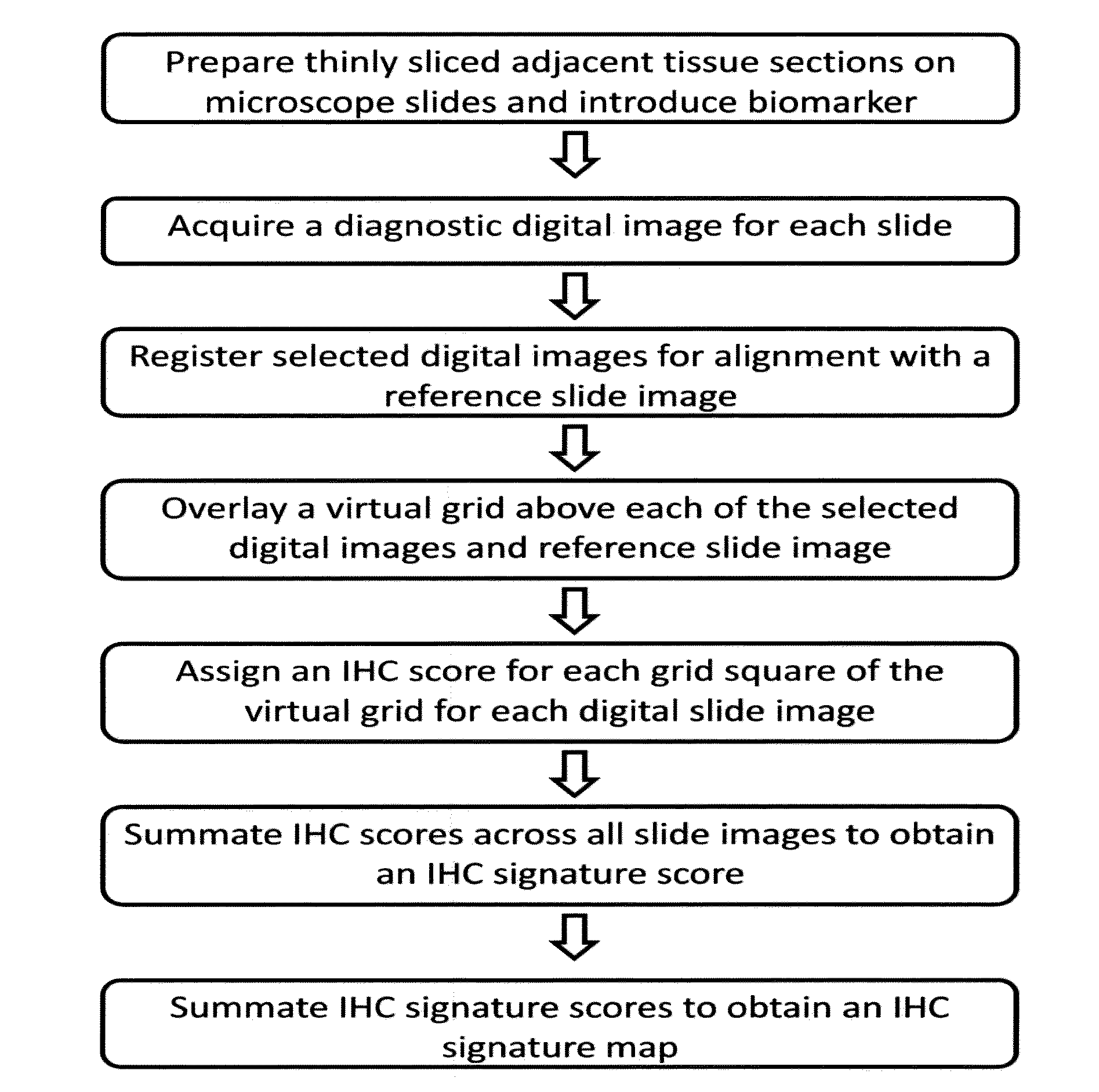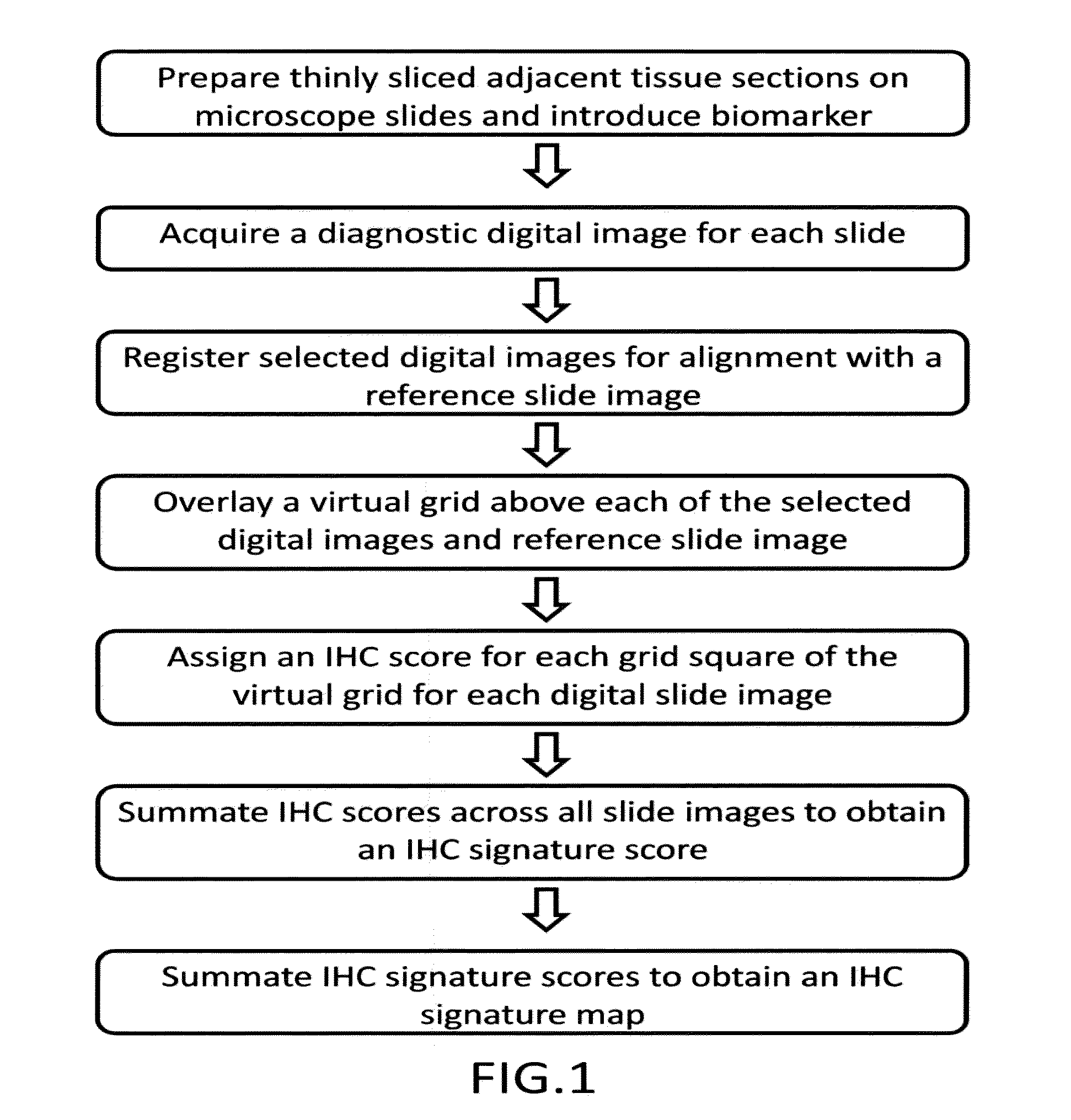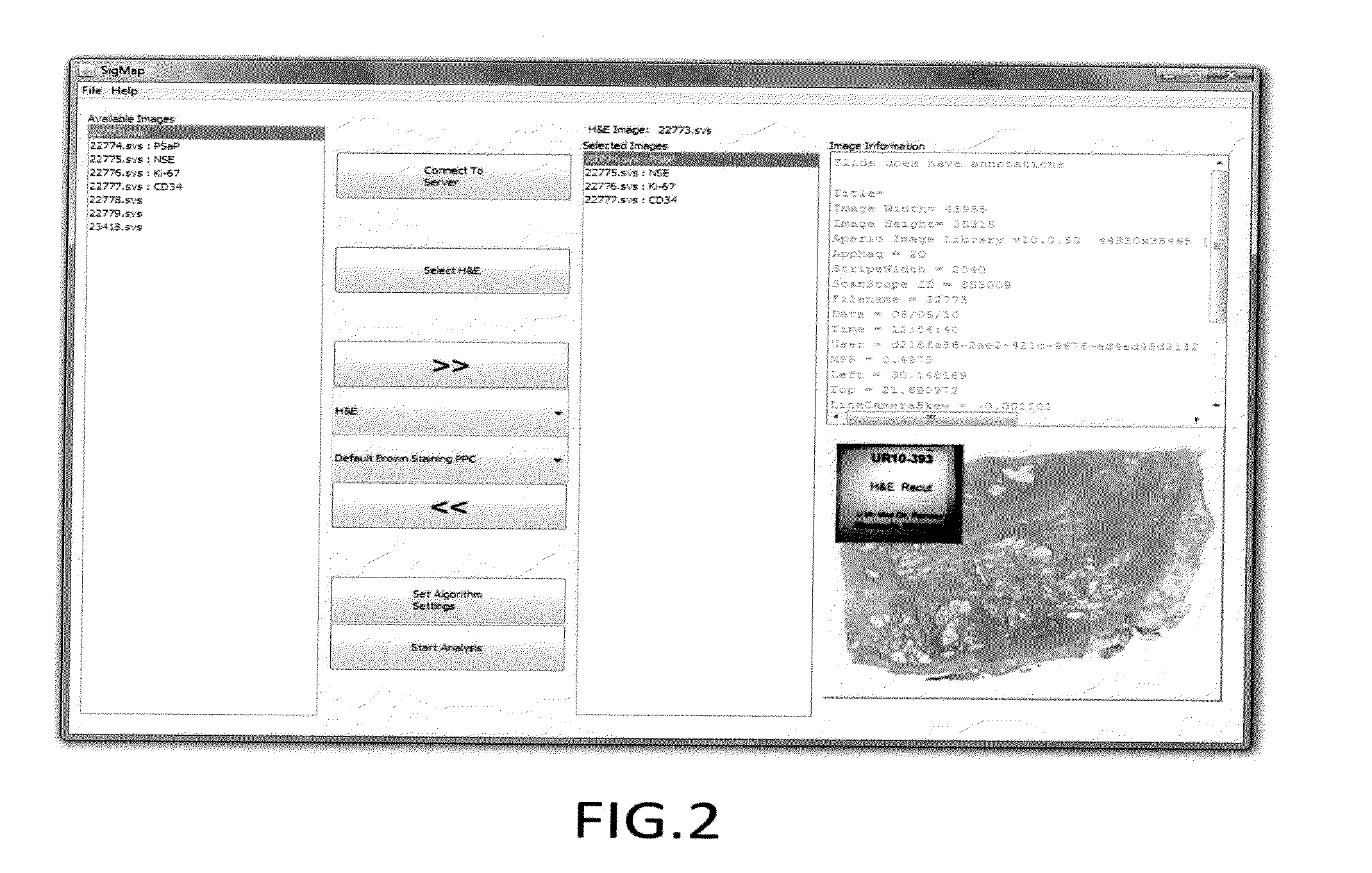Computerized methods for tissue analysis using n-gene profiling
a tissue analysis and computerized technology, applied in the field of tissue analysis, can solve the problems of requiring excessive time, subject to human errors in analysis, and difficult for pathologists to attempt an analysis,
- Summary
- Abstract
- Description
- Claims
- Application Information
AI Technical Summary
Benefits of technology
Problems solved by technology
Method used
Image
Examples
example 1
IHC Assays
[0041]Unstained sections of formalin-fixed, paraffin-embedded prostate tissue containing discrete areas of prostatic adenocarcinoma of different histologic grades were obtained. 3 micrometer (n+1) adjacent sections were cut from the paraffin block. One section (the reference slide) was stained with hematoxylin and eosin (H&E). Adjacent sections were stained with primary antibody directed against either prostate specific acid phosphatase using monoclonal antibody clone PASE / 4LT and a heat-induced epitope retrieval method using citrate buffer, or neuron-specific enolase using monoclonal antibody clone BBS / NC / V1-h14 and a heat-induced epitope retrieval method using citrate buffer. [[CD34 clone QBend / 10 without epitope retrieval; Ki67 clone MM1 with citrate buffer; Mud 1 clone MaG96 with citrate buffer]] After washing, brown precipitate at sites of primary antibody binding was developed using a peroxidase-conjugated second step antibody and a 3,3-diaminobenzidine (DAB) reagent...
PUM
 Login to View More
Login to View More Abstract
Description
Claims
Application Information
 Login to View More
Login to View More - R&D
- Intellectual Property
- Life Sciences
- Materials
- Tech Scout
- Unparalleled Data Quality
- Higher Quality Content
- 60% Fewer Hallucinations
Browse by: Latest US Patents, China's latest patents, Technical Efficacy Thesaurus, Application Domain, Technology Topic, Popular Technical Reports.
© 2025 PatSnap. All rights reserved.Legal|Privacy policy|Modern Slavery Act Transparency Statement|Sitemap|About US| Contact US: help@patsnap.com



